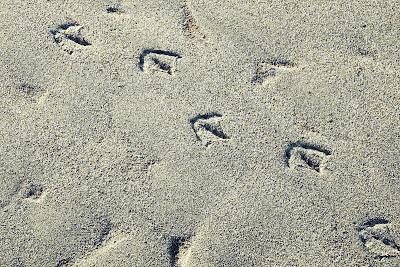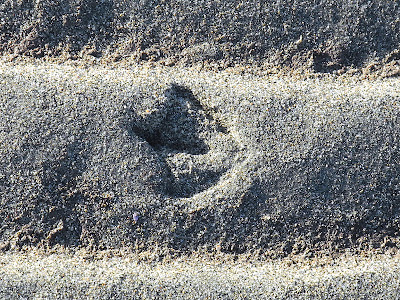“A three year old child is a being who gets almost as much fun out of a fifty-six dollar* set of swings as it does out of finding a small green worm.”
Bill Vaughn
I guess I haven't grown up yet; I'd still rather have the worm. Especially if it's blue-green and iridescent, and has pink paddle feet!
 |
| I posted this photo the other day. Mid-section and paddle feet (parapodia) of a long polychaete worm. |
The worms in my tank are fattening up and stretching out. Some stay mostly underground, like the tiny red lines (ribbon worms, maybe) that appear between the sand grains. Some occasionally venture forth to collect a snack. One lived for a while in a tangle of sea lettuce and eelgrass, and foraged for food in the open water, but always with his tail firmly attached to his home base.
I never pass the tank, these days, but what I stop to check out the sand layer. I'm getting to recognize specific worms, even if I still can't identify the species.
Here's one of the adventurous ones:
 |
| A very poor photo; I had to crop out most of the confusing background. This worm, about 3 inches long, crawls up the glass and scouts around along the floor, looking for goodies. He likes the hermit crab pellets, once they're soggy. |
This is the same species as the one that lived in the seaweed, but it prefers to retreat under the sand. What we see here is the underside. The dotted red line down the middle would be one of the two main blood vessels; the other goes along the topside of the gut, from head to tail. The head is on the right here, tentacled and with a mouth that opens as wide as the body of the worm.
 |
| Cross-section of worm body. The central tube is the intestine. From Wikipedia. |
 |
| Underside of the head, showing the tentacles and two fat palps. |
About those feet: all polychaete worms have them, one pair per segment: some are more feathery or bristly than others, some fatter, some longer. They serve a multitude of functions. Moving about, of course, both in the sand, where they "walk" on the tips of the parapodia, and swimming. (
Video of swimming worms.) They are sometimes used for burrowing, as well. In many species, mostly tubeworms, the parapodia also serve for respiration.
Reading about the burrowing worms, I got the impression that they make a permanent burrow and stay in it. Not so. I am careful not to disturb a burrow, but they move about. A section of wormhole will appear next to the glass, giving me a window into the owner's private life, stay put a day or so, then move on. The next time it shows up, it will be several inches away, or around the side of the tank.
Most of the time, of course, the worms are in the center and have no windows. But they don't seem to mind the light when they do build next to the glass, except when I shine a light suddenly in their eyes; then they quickly scrunch themselves down into the dark.
The tunnel is kept open and roomy by side-to-side waving motion (
peristalsis), the sand grains held in place with a scaffolding of secreted mucus.
 |
| Fat worm mid-section in his burrow. With the photo at full size, flecks of light, probably sand, show up, caught in the coating the worm left on the glass. |
This worm I have only seen a couple of times:
 |
| I think it's the same as one I photographed long ago, when it was tiny. (Here; bottom photo.) Now she's fat and solid. And shy. Again, the sand grains caught in the slime show up as light specks; they seem to be lined up on threads, like on a spider's web. |
All these would be feeding on detritus, like the left-over hermit food, and/or smaller organisms in the sand; other worms, burrowing amphipods, like the
Americorophium salmonis I found. They don't seem to bother even the smallest of the hermits, nor the anemone. (Good thing for them, or I'd be straining them out of the sand!) They help to keep the tank clean, like my other scavengers, and aerate the sand, besides.
*That was a long time ago; these days, we need an extra zero.

















































